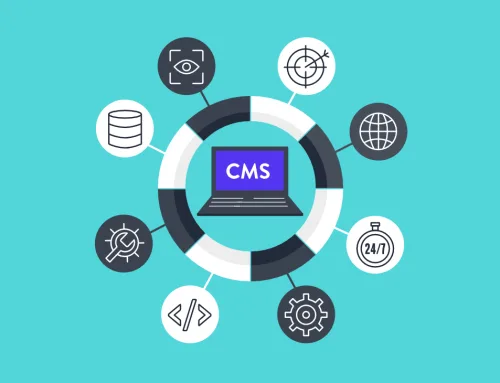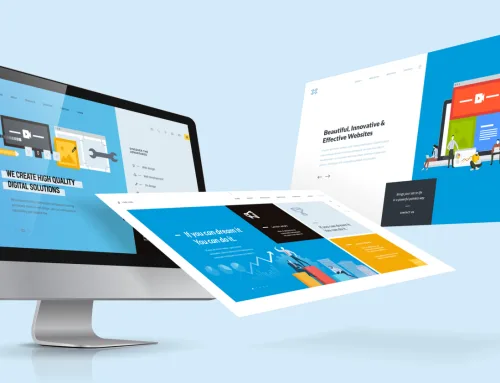In 2024, building and maintaining a successful website goes beyond simply establishing an online presence. Your site needs to be dynamic, user-focused, and in tune with the latest trends and user expectations. Below are the key elements you should concentrate on:
1. Mobile-First Design
- Responsive Design: Prioritize mobile-friendly designs, ensuring your website adjusts fluidly across all devices. With most traffic coming from mobile, a seamless experience on smartphones and tablets is crucial.
- Touch-Friendly Interfaces: Optimize for touch interactions with larger buttons and intuitive gestures to enhance usability on mobile devices.
2. Fast Loading Speed
- Performance Optimization: Speed matters for both user experience and search rankings. Implement performance strategies such as image optimization, code minimization, lazy loading, and browser caching to improve load times.
- Core Web Vitals: Focus on improving Google’s Core Web Vitals metrics like page loading speed, visual stability, and interactivity to ensure smooth performance.
3. User Experience (UX)
- Intuitive Navigation: Create simple, easy-to-follow navigation paths that allow users to find what they need effortlessly.
- Accessibility: Design with inclusivity in mind, ensuring all users, including those with disabilities, can navigate your site. Use proper semantic HTML, alt text for images, sufficient contrast, and keyboard-friendly navigation.
4. Personalization
- Dynamic Content: Tailor the user experience through personalized content, product suggestions, and offers based on individual user behavior and preferences.
- AI and Machine Learning: Leverage AI tools for dynamic personalization, such as AI-driven chatbots or personalized content recommendations.
5. Security
- SSL Certification: Ensure your website has SSL certification, which encrypts user data and builds trust. HTTPS is essential for e-commerce and data-sensitive websites.
- Regular Updates: Keep your CMS, themes, and plugins up-to-date to protect against vulnerabilities.
- Data Privacy: Adhere to data privacy laws like GDPR and CCPA, providing clear consent options and privacy policies for users.
6. SEO and Voice Search Optimization
- Content Optimization: Employ SEO best practices like using relevant keywords, meta tags, and structured data to rank higher in search engines.
- Voice Search Readiness: Adapt your content for voice search by focusing on natural language queries and long-tail keywords, as more users adopt voice-activated search technologies.
7. AI-Driven Chatbots and Customer Support
- Chatbots: Use AI-driven chatbots for 24/7 customer service, guiding users through inquiries and processes with automated assistance.
- Instant Support: Ensure customer support is readily available via chatbots, FAQs, or live chat to boost engagement and conversions.
8. Sustainability and Green Hosting
- Eco-Friendly Hosting: Opt for hosting providers that use renewable energy or offset carbon emissions, reflecting the growing demand for sustainable business practices.
- Energy Efficiency: Design your website to minimize energy consumption by optimizing content, reducing resource use, and employing lightweight code.
9. Content Strategy
- High-Quality Content: Deliver valuable and relevant content, such as blogs, videos, and infographics, that resonates with your target audience.
- Content Diversity: Use a mix of formats (e.g., video, podcasts, interactive content) to engage different audience segments.
- User-Generated Content: Foster trust and community by showcasing user reviews, testimonials, and social media posts on your site.
10. Interactive and Engaging Features
- Interactive Tools: Add quizzes, calculators, and configurators to enhance user engagement and keep visitors on your site longer.
- Gamification: Apply gamification strategies such as reward systems, challenges, and leaderboards to encourage user interaction and return visits.
11. AI-Powered Analytics and Insights
- Advanced Analytics: Use AI-powered tools to gather insights on user behavior, predict trends, and refine your strategies accordingly.
- A/B Testing: Continually run A/B tests to determine which elements of your website are most effective at driving user engagement and conversions.
12. Social Proof and Community Building
- Social Media Integration: Incorporate social media channels and features on your website to promote engagement and strengthen your brand presence.
- Community Features: Build user communities with forums, comment sections, and social sharing features to foster interaction and loyalty.
13. E-commerce Enhancements
- Seamless Checkout: Ensure your e-commerce checkout process is user-friendly, secure, and optimized for mobile devices.
- Diverse Payment Options: Offer multiple payment methods, including digital wallets like Apple Pay and Google Pay, for convenience.
- Subscription Models: Implement subscription services where applicable, providing consistent revenue and improving customer retention.
14. Simplicity and Minimalism
- Clean Design: Use minimalist design principles with plenty of white space to reduce clutter and focus on the essential content.
- Clear CTAs: Place prominent, easy-to-understand calls to action (CTAs) to guide users without overwhelming them.
15. Legal Compliance
- Data Protection: Comply with data protection regulations by implementing transparent privacy policies and obtaining user consent for data usage.
- Cookie Management: Offer users control over cookies and data collection through a GDPR-compliant cookie consent banner.
By incorporating these elements in 2024, your website will provide a cutting-edge, engaging, and user-friendly experience, helping you stand out from the competition and build stronger connections with your audience.









